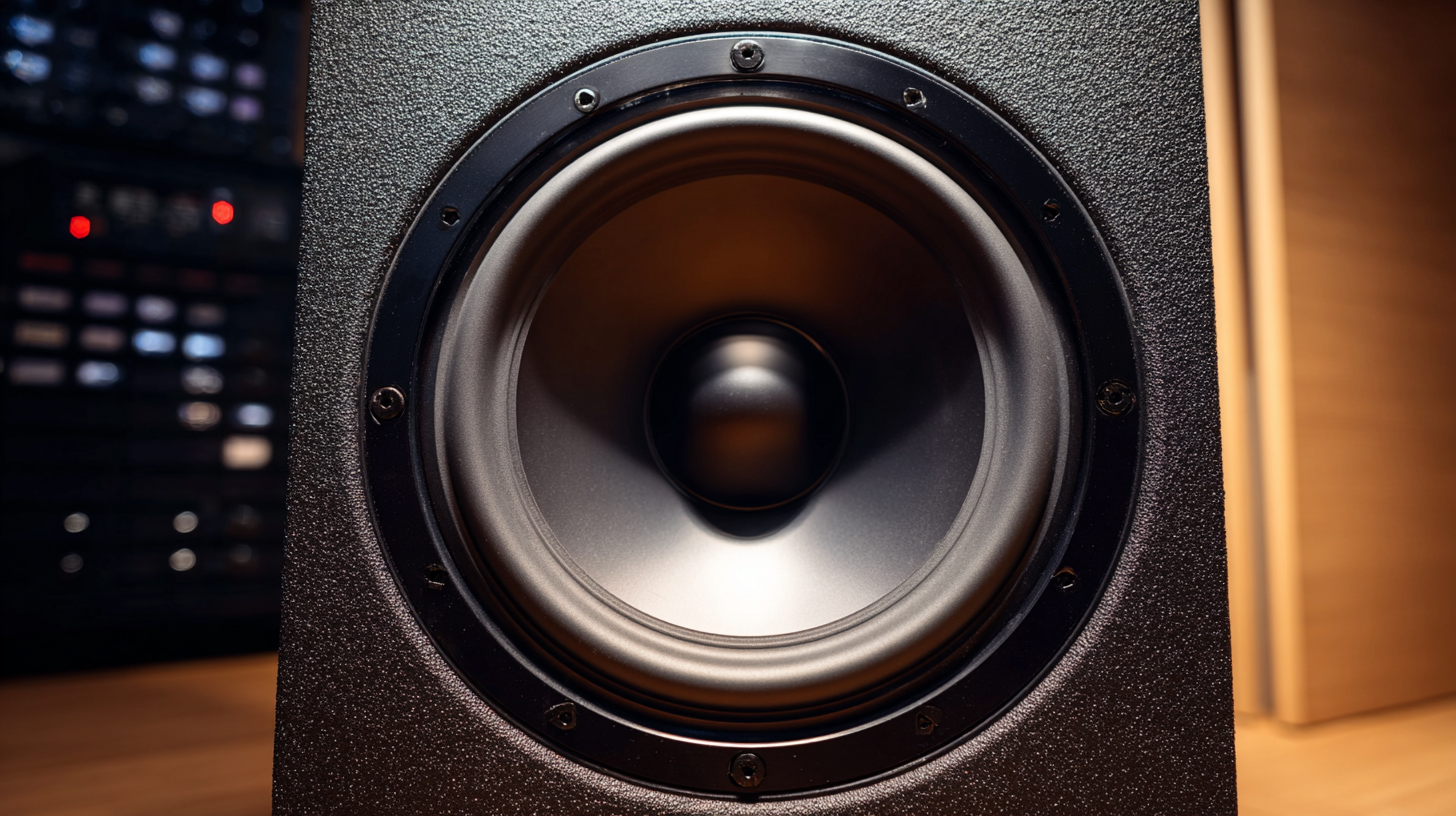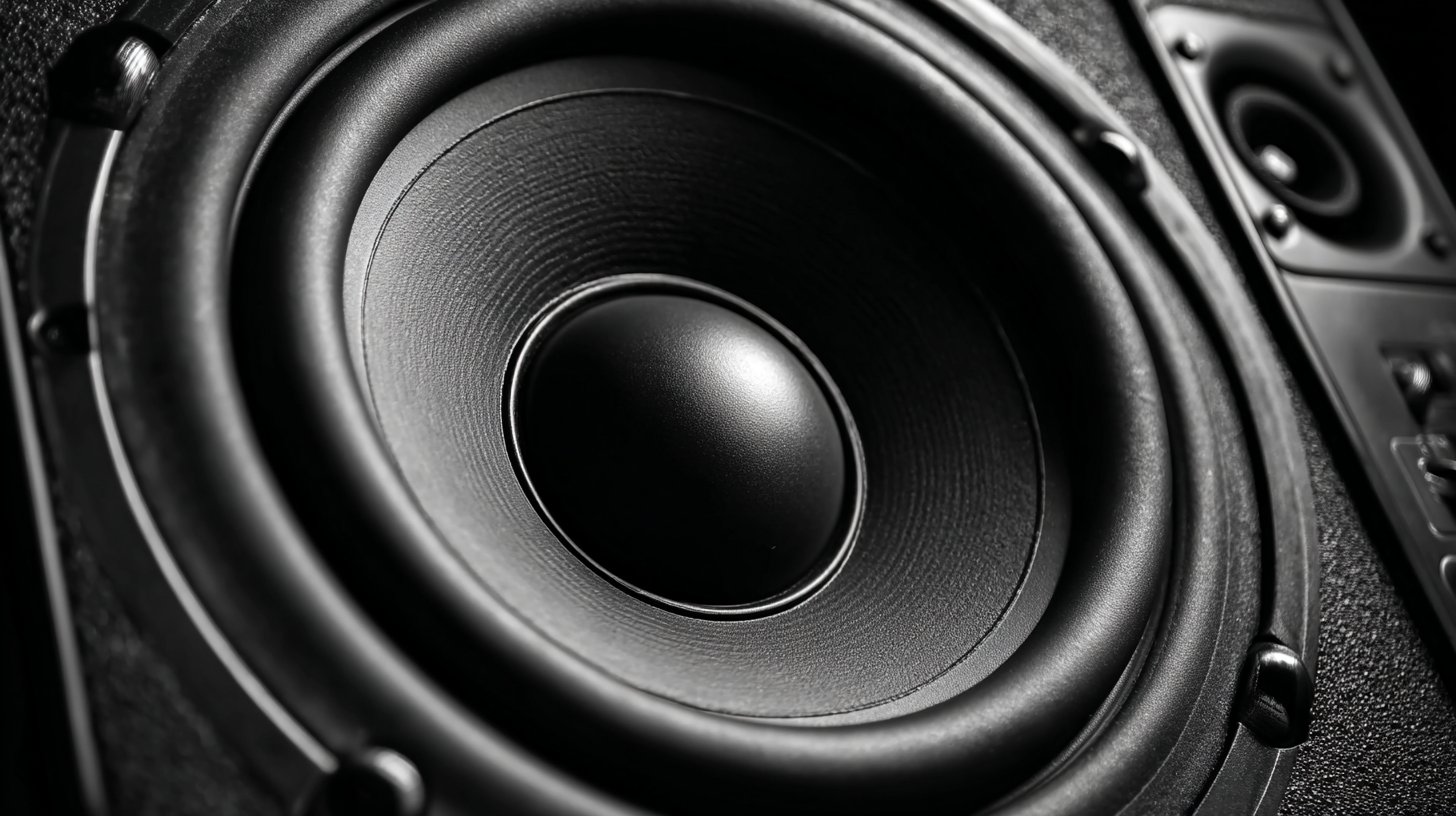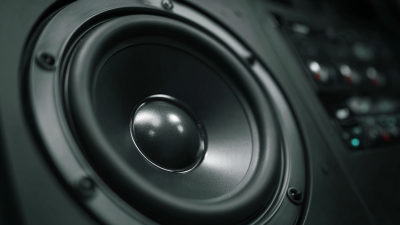Unlocking the Deep Bass: The Science Behind Power Subwoofers Explained
 As audio technology continues to evolve, the demand for high-performance sound systems has surged, particularly in home theaters and professional audio setups. Among the essential components of these systems, the power subwoofer plays a crucial role in delivering deep, impactful bass that enhances the overall listening experience. According to a recent report by the Consumer Electronics Association, 45% of consumers consider bass quality to be a key factor in their purchasing decisions for audio equipment. Furthermore, advancements in subwoofer design, such as the use of specialized drivers and increased amplification, have enabled these systems to produce low-frequency sounds with unprecedented clarity and power. In this article, we will explore the science behind power subwoofers, unraveling the technology that allows them to deliver powerful bass that resonates with both music enthusiasts and casual listeners alike.
As audio technology continues to evolve, the demand for high-performance sound systems has surged, particularly in home theaters and professional audio setups. Among the essential components of these systems, the power subwoofer plays a crucial role in delivering deep, impactful bass that enhances the overall listening experience. According to a recent report by the Consumer Electronics Association, 45% of consumers consider bass quality to be a key factor in their purchasing decisions for audio equipment. Furthermore, advancements in subwoofer design, such as the use of specialized drivers and increased amplification, have enabled these systems to produce low-frequency sounds with unprecedented clarity and power. In this article, we will explore the science behind power subwoofers, unraveling the technology that allows them to deliver powerful bass that resonates with both music enthusiasts and casual listeners alike.
Understanding the Role of Subwoofers in Audio Systems
 Subwoofers are a crucial component in creating a rich and immersive audio experience. Unlike standard speakers that typically reproduce mid to high frequencies, subwoofers are dedicated to handling low-frequency sounds, often below 200 Hz. This allows them to deliver the deep bass that is essential for a variety of audio applications, from music and movies to gaming. The presence of subwoofers enhances the overall sound field, adding depth and fullness that elevate the listening experience.
Subwoofers are a crucial component in creating a rich and immersive audio experience. Unlike standard speakers that typically reproduce mid to high frequencies, subwoofers are dedicated to handling low-frequency sounds, often below 200 Hz. This allows them to deliver the deep bass that is essential for a variety of audio applications, from music and movies to gaming. The presence of subwoofers enhances the overall sound field, adding depth and fullness that elevate the listening experience.
In an audio system, the role of subwoofers extends beyond mere bass production. They help balance the frequency range, ensuring that low-end sounds do not overpower mids and highs. Properly integrated with other speakers, subwoofers can create a seamless sound stage, allowing the listener to perceive the music’s dynamics fully. Moreover, advanced technologies in subwoofer design, such as Bass Reflex or Acoustic Suspension systems, further optimize performance, providing efficient and impactful low-frequency reproduction. This interplay between subwoofers and the overall audio system is vital in achieving an authentic sound experience that captivates and engages the audience.
The Physics of Sound Waves: How Bass Frequencies Work
Bass frequencies, typically ranging from 20 Hz to 200 Hz, play a crucial role in how we perceive sound. These low-frequency waves resonate at longer wavelengths, making them feel more like a physical presence than just an auditory experience. When a subwoofer produces deep bass sounds, it does so by creating vibrations that travel through the air, causing our bodies to sense these frequencies. This connection to the physical world is why bass can be so immersive, adding depth and richness to music, movies, and live performances.
The behavior of sound waves is governed by the principles of physics. Bass frequencies are produced by large speakers that can move significant amounts of air, creating pressure changes that result in sound waves. The design of power subwoofers often incorporates larger cones and enclosures, allowing for more efficient sound wave production. This enables them to reach deeper frequencies without distortion. Understanding how these low frequencies work not only enhances our listening experience but also informs the development of audio technology, leading to better quality and performance in sound reproduction systems.
Unlocking the Deep Bass: The Science Behind Power Subwoofers Explained
| Frequency Range (Hz) | Wavelength (m) | Sound Pressure Level (dB) | Common Applications |
|---|---|---|---|
| 20 - 60 | 17.2 - 57.0 | 100 - 110 | Home Theater |
| 60 - 100 | 3.4 - 5.7 | 90 - 100 | Music Production |
| 100 - 200 | 1.7 - 3.4 | 85 - 95 | DJ Sets |
| 200 - 400 | 0.86 - 1.7 | 80 - 90 | Public Events |
Key Features to Look for in High-Performance Subwoofers
When selecting a high-performance subwoofer, several key features should be prioritized to ensure an immersive audio experience.
First and foremost, the size of the subwoofer plays a crucial role. Generally, larger woofers are capable of producing deeper bass frequencies. A subwoofer with a diameter of 10 inches to 12 inches is often considered ideal for both home theaters and music listening, striking a perfect balance between depth and clarity.
Another important feature is the power handling capability. Subwoofers are typically rated in watts; a higher wattage generally means better performance and more impact. Look for models with a robust amplifier, as this enhances efficiency and reduces distortion at high volumes.
Additionally, consider the type of enclosure. Sealed boxes tend to deliver tighter, more precise bass, while ported designs offer louder output with a slightly less controlled response. The choice between these enclosures can significantly affect the overall sound quality, making it essential to choose based on personal listening preferences.
Tips for Properly Setting Up Your Subwoofer for Optimal Sound
Setting up a subwoofer correctly is crucial for achieving optimal sound quality and enhancing your audio experience. One of the first steps is to choose the right location for your subwoofer. Ideally, place it in a corner or along a wall to amplify the bass response. Experimenting with different positions can help you find the "best spot," often referred to as the "subwoofer crawl." This involves moving around the room to listen for the best bass response, allowing you to pinpoint the most effective location.
Another important aspect of setting up your subwoofer is adjusting the phase and frequency settings. Most subwoofers come with adjustable phase controls, which can help synchronize the subwoofer's output with your main speakers, preventing cancellation of frequencies. Additionally, setting the crossover frequency correctly ensures that the subwoofer only handles the lower frequencies while the main speakers tackle the mids and highs. Typically, a crossover point between 80 to 120 Hz works well, but this can vary based on the characteristics of your speakers. Fine-tuning these settings will result in a cohesive sound that fully utilizes the depth and power of your sound system.
Unlocking the Deep Bass: Subwoofer Frequency Response
This chart illustrates the frequency response of a typical power subwoofer. As the frequency increases from 20 Hz to 100 Hz, you can see how the output level (in dB) varies, highlighting the subwoofer's ability to reproduce deep bass effectively.
Common Myths About Subwoofers Debunked: What You Need to Know
When discussing subwoofers, several myths often cloud the understanding of their capabilities. One common misconception is that larger subwoofers always deliver better bass. While it is true that size can contribute to deeper sounds, the quality of the driver and enclosure design play a crucial role in performance. According to a report by the Consumer Technology Association, an optimal subwoofer setup can create a more immersive experience, regardless of size, provided it is correctly matched with the rest of the audio system.

Another prevalent myth is that wattage is the sole indicator of a subwoofer’s performance. Many audio enthusiasts mistakenly believe that higher wattage equals superior sound quality. However, the RMS power rating, which measures continuous power handling, is a more reliable benchmark. The Journal of the Audio Engineering Society highlights that distortion levels at high power outputs can severely affect audio quality, thus emphasizing the importance of both wattage and the overall design of the subwoofer.
Understanding these concepts is crucial for anyone looking to enhance their audio experience without falling victim to common misconceptions.
Related Posts
-

How to Choose the Best Subwoofer for Your Car Audio System
-

Ultimate Guide to Comparing the Best Car Audio Systems for Your Vehicle
-

How to Choose the Best Car Component Speakers for Exceptional Sound Quality
-

8 Essential Tips for Elevating Your Car Audio Experience
-

Exploring Unique Alternatives to High Speakers for Ultimate Sound Experience
-

Issues Faced by Users of Mobile Audio Devices
